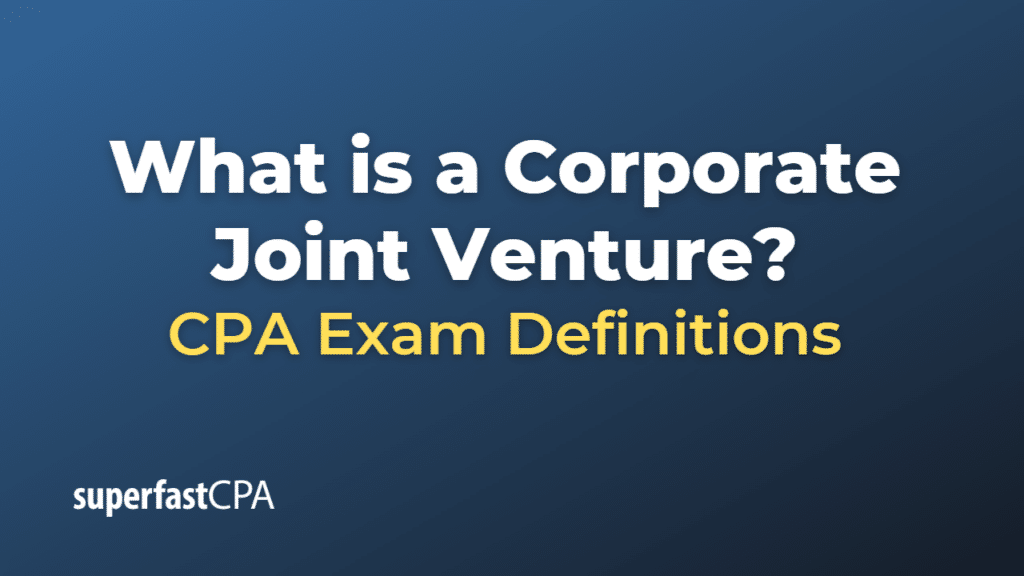Corporate Joint Venture
A corporate joint venture is a business arrangement where two or more companies collaborate to create a separate legal entity to pursue a specific project or business objective. In a corporate joint venture, each participating company contributes resources, such as capital, technology, expertise, or assets, while sharing the risks, rewards, and decision-making authority associated with the venture.
Corporate joint ventures are often formed for various strategic purposes, including:
- Accessing new markets or expanding geographically
- Pooling resources and expertise for research and development
- Sharing the risks and costs of a large project or investment
- Combining complementary assets or capabilities to enhance competitive advantage
- Satisfying regulatory requirements or gaining access to government contracts
A corporate joint venture can take different legal forms, such as a corporation, partnership, or limited liability company, depending on the jurisdiction and the specific needs and objectives of the venture partners. The ownership structure and governance of the joint venture are typically defined in a joint venture agreement, which outlines the rights and responsibilities of each partner, the management structure, the allocation of profits and losses, and the terms for the eventual dissolution or exit from the venture.
While corporate joint ventures can offer significant benefits, such as access to new markets, cost-sharing, and risk diversification, they also involve challenges and risks. These can include potential conflicts of interest, differences in management styles or corporate cultures, and the need to coordinate decision-making and operations across multiple organizations. Therefore, companies considering a joint venture should carefully evaluate the potential benefits and risks and ensure that they have a clear and well-defined agreement in place to govern the venture.
Example of a Corporate Joint Venture
Let’s consider a hypothetical example of a corporate joint venture between two companies, AutoTech Inc. and GreenPower Corp.
AutoTech Inc. is a well-established automobile manufacturer with expertise in producing gasoline-powered vehicles, while GreenPower Corp. is a relatively new company that specializes in advanced battery technology and electric powertrain systems. Both companies recognize the growing demand for electric vehicles (EVs) and the potential for collaboration to capitalize on this market opportunity.
The two companies decide to form a corporate joint venture, called “EcoDrive Motors,” to develop and manufacture a new line of electric vehicles. In this joint venture:
- AutoTech contributes its expertise in automotive design, manufacturing capabilities, and established distribution network.
- GreenPower contributes its cutting-edge battery technology, electric powertrain know-how, and research and development capabilities.
The ownership of EcoDrive Motors is split 50-50 between AutoTech and GreenPower, with both companies sharing equally in the profits and losses generated by the joint venture. The joint venture agreement outlines the management structure, decision-making process, and the allocation of resources and responsibilities.
By collaborating in the joint venture, AutoTech gains access to advanced battery technology and accelerates its entry into the growing electric vehicle market. At the same time, GreenPower benefits from AutoTech’s manufacturing capabilities, market presence, and distribution network, which significantly enhances its ability to commercialize its technology and scale up production.
Through the EcoDrive Motors joint venture, both companies leverage their complementary strengths, share the risks and costs associated with developing and producing electric vehicles, and enhance their competitive position in the market.
This example demonstrates how a corporate joint venture can create value for the participating companies by combining their resources, expertise, and capabilities to pursue a common business objective while sharing the associated risks and rewards.













